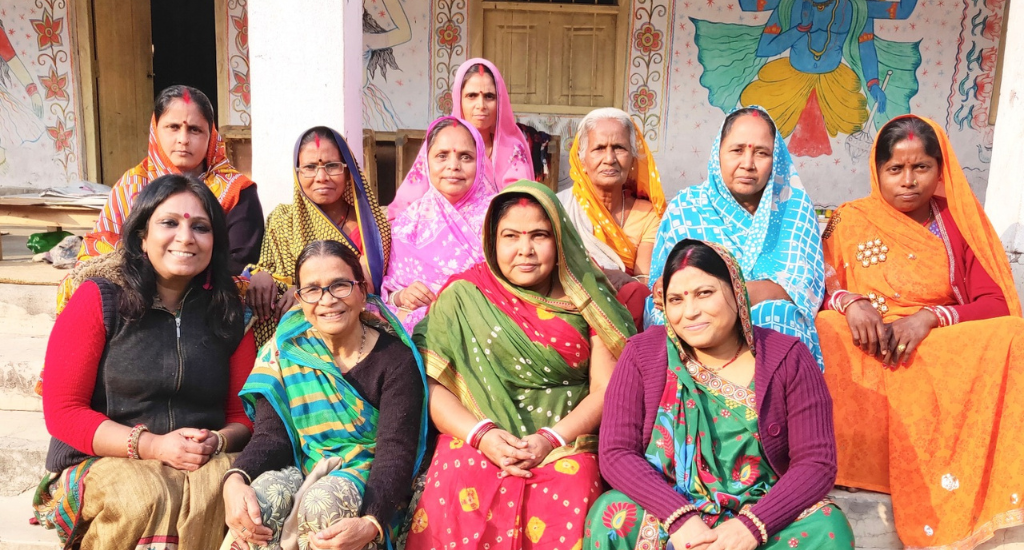
Master strokes of a Mithila maestro
Manisha Jha, a passionate Mithila painter and architect dedicated to preserving tradition, talks about her journey, artistic roots and vision for sustaining the rich folk art of this region.

Manisha Jha, a passionate Mithila painter and architect dedicated to preserving tradition, talks about her journey, artistic roots and vision for sustaining the rich folk art of this region.
With a name that literally translates to ‘forest of honey’, the Madhubani folk art of Bihar is bound to have a rich connection with nature. And it’s this link with our roots and traditions that Manisha Jha, a Mithila painter and an architect, wishes to bring to the forefront with her artworks and skill.
Her dedication to the art form is evident, having imparted knowledge to over 10,000 students globally.
“I am a self-taught artist and have learned Mithila painting from my mother and grandmother,” Jha told Village Square in an exclusive interview, as she shared insights into her journey, passion and commitment to preserving the rich folk art tradition of Mithila over the last three decades.
Originally hailing from the village Satlakha in Madhubani district of Bihar, and later married in the village Bhojpandaul of the same district, Jha’s roots are deeply embedded in the culture of Mithila, a region that comprises parts of Bihar and Jharkhand in India and adjoining districts in Nepal.
Also Read: Madhubani painters want better deal for their work

“I am a Mithila painter by tradition and architect by profession, although now I am totally into Mithila paintings,” Jha said.
A significant contribution to her community is her role in empowering women artists, for which she runs a free school for women at Bhojpandaul village. For Jha, it’s not just about personal artistic growth but also about uplifting the community and ensuring the economic sustenance of women in Mithila. She also supports training centres of Madhubani artists to produce and market their work.
“I have trained more than 500 women artists from different villages of Madhubani district,” she said.
Elaborating on her vision, Jha passionately expressed, “My vision is to enhance and keep alive the rich folk art tradition of Mithila by creating awareness and producing the finest artworks.”
Also Read: Tikuli art – Born from bindis

The Madhubani folk art, said to be over 3,000 years old, widely draws from themes surrounding nature, life cycle, and Hindu and Buddhist mythological tales. Since the Hindu goddess Sita is believed to have been born here, scenes from the Ramayana remain a popular subject. Colours made from natural materials were traditionally used and women of the household made these paintings on the walls and floors of their homes. Elaborate designs were created for special occasions like weddings and festivals.
Discussing the evolution of Madhubani folk art, Jha acknowledged its flourishing state but pointed out the challenges faced by artists.
“Madhubani art is recognised far more now than it was some decades ago, but not all the artists who are painting are doing well,” she observed. Despite this, a positive transformation of Madhubani art is happening, taking it from being confined to household walls to gracing prestigious museums worldwide, she added.
Jha also emphasised the relevance of Madhubani art for the younger generation, stating, “Youngsters should learn this art as it gives you an edge compared to other artists and art forms worldwide.”
Sharing her experiences of incorporating the art into various domains, from interior decoration and film set designs to garments, accessories advertising and book illustrations, she elaborated on the versatility and timelessness of Madhubani art.
Also Read: Indigenous art forms of Santhal Pargana are in need of revival

Jha has also pioneered the digital frontier for Mithila paintings by starting a website, madhubani.com, dedicated to the art form. Here, enthusiasts can explore details and works of rural women artists, further promoting the accessibility and appreciation of this ancient art.
In a recent spotlight at ‘Samanvay,’ a six-day event celebrating rare gems of folk art, her works were on display earlier this month in New Delhi. This initiative was organised by Art Tree, an organisation working towards promoting Indian folk arts through exhibitions, workshops, symposiums and talks. The event featured works from seven artists, highlighting the varied traditions of Madhubani, Warli, Gond, Phad and Sanjhi.
The lead image at the top shows Manisha Jha with the rural women artists she has supported (Photo courtesy Manisha Jha)